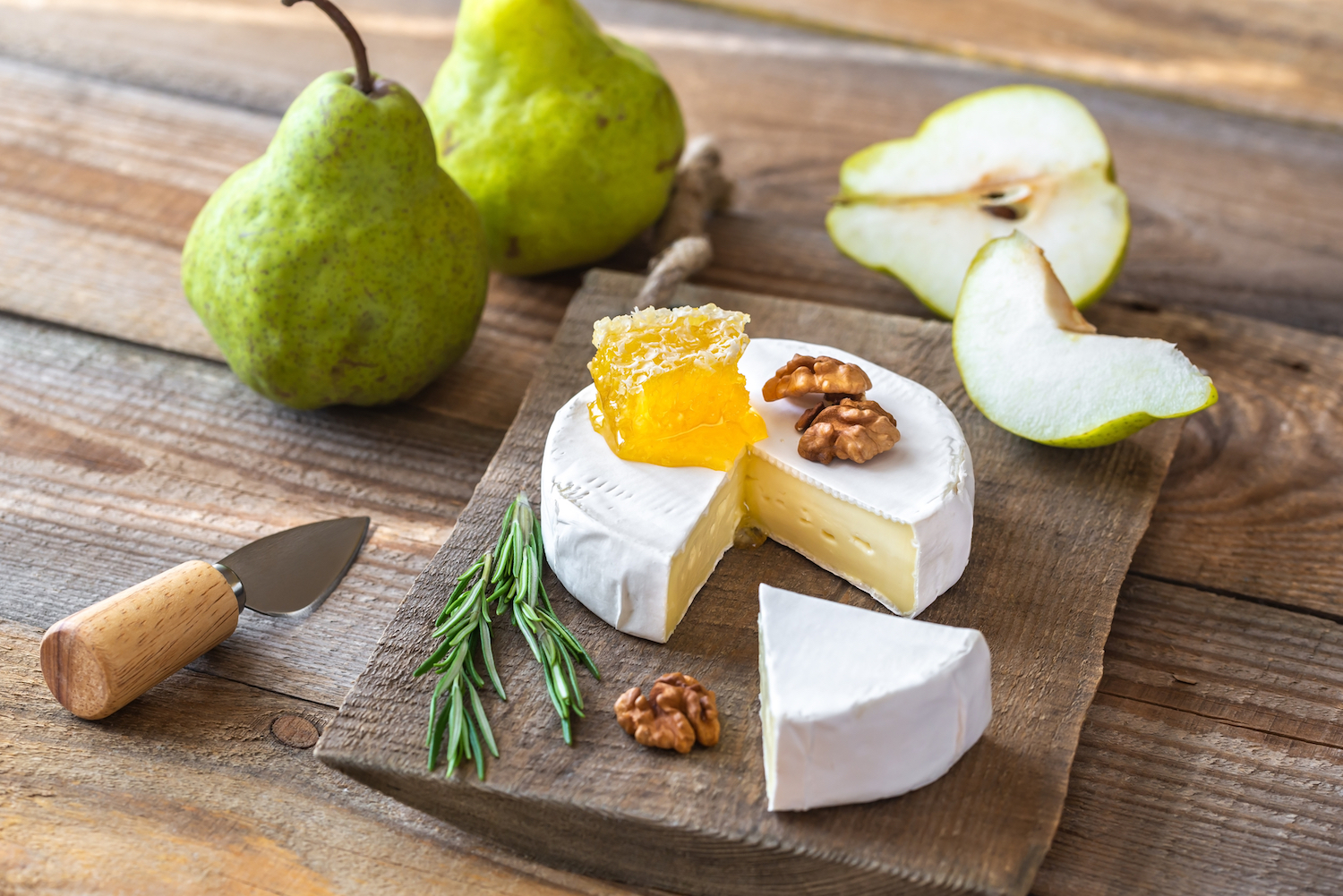
Making Homemade Cream Cheese
In the 1800s, cheese was made from unpasteurized raw milk. The first commercial pasteurized milk was produced in 1882, but the first law to require milk to be pasteurized wasn’t passed until 1908. (source).
Cream cheese was a popular cheese to make in the 1800s since it doesn’t have to be aged.
For more information on making cheese in modern times, you may want to visit the New England Cheese Making Supply Company website.
INFORMATION BELOW FROM 1800s COOKBOOKS
PENNSYLVANIA CREAM CHEESE
Take three gallons of milk, warm from the cow, and strain it into a tub. Have a piece of rennet* two inches square, soaked in half a pint of water for several hours. Drain off the water and stir it in. When it is sufficiently turned, cut the curd, spread a thin linen cloth over the top, and as the whey rises, dip it off with a saucer. Put the curd as whole as possible into a cheese-hoop about the size of a dinner plate, first spreading a wet cloth inside. Then fold the cloth smoothly over the top, and put a weight on the top heavy enough to make the whey drain out gradually. In six or seven hours it will be ready to take out of the press. Rub it over with fine salt, set it in a dry dark place, change it from one plate to another twice a day, and it will be fit for use in less than a week.
*rennet – the rennin-containing substance from the stomach of the calf, used to curdle milk, as in making cheese, junket, etc.
NEW ENGLAND CREAM CHEESE
Take a large pan of rich unskimmed milk that has set in the dairy all night, and is from pasture-fed cows in the summer. Have ready a small teacup* of rennet-water, in which a piece of rennet, from four to six inches square, has been steeping several hours. Stir the rennet-water into the pan of milk, and set it in a warm place till it forms a firm curd. Tie up the curd in a clean linen bag, and hang it up in the dairy with a pan under it to receive the droppings, till it drips no longer.
Then transfer the curd to a small cheese mold. Cover it all over with a clean linen cloth, folded over the sides, and well secured. Put a heavy weight on the top, so as to press it hard. The wooden vessel in which you mold cream cheeses should be a bottomless, broad hoop, about the circumference of a dinner plate. Set it (before you fill it with the curd) on a very clean table or large flat dish. Turn it every day for four days, keeping it covered thickly all over with fresh green grass, frequently renewed. When done, keep it in a dry cool place, first rubbing the outside with fresh butter. When once cut, use the whole cheese on that day, as it may spoil before the next. Send it to the table cut across in triangular or pie pieces.
*teacup – same as a jill or gill; four ounces in the U.S. and five ounces in the U.K.
NEW JERSEY CREAM CHEESE
First scald* the quantity of milk desired. Let it cool a little, then add the rennet. The directions for quantity are given on the packages of “Prepared Rennet.” When the curd is formed, take it out on a ladle without breaking it. Lay it on a thin cloth held by two persons.
Dash a ladleful of water over each ladleful of curd. To separate the curd, hang it up to drain the water off, and then put it under a light press for one hour. Cut the curd with a thread into small pieces. Lay a cloth between each two, and press for an hour. Take them out, rub them with fine salt, let them lie on a board for an hour, and wash them in cold water. Let them lie to drain, and in a day or two the skin will look dry. Put some sweet grass under and over them, and they will soon ripen.
*scald – to heat liquid almost to a boil, until bubbles begin to form around the edge.
*Prepared Rennet – mass-produced rennet became available in the 1860s.
SIMPLE CREAM CHEESE
Simple cream cheese is the easiest of all, for one has only to take a quart of thick cream, put with two drops of rennet into a napkin which has been freshly rinsed out in cold spring water, and sprinkle a little salt over it. Tie up the cream in the napkin as tightly as possible, and hang it up in the dairy. It may be eaten in twenty-four hours. The napkin must be changed at night and again in the morning, for a fresh one wrung out in cold water. Use the next day.
BUTTERMILK CREAM CHEESE
This cheese is formed from the curd of buttermilk, which is finer in texture and not so likely to become tough as that formed from ordinary sour milk. Warm the buttermilk slowly, being careful not to allow the temperature to rise beyond 100 degrees Fahrenheit. As the milk is heated, the curd will form and will gradually sink to the bottom of the vessel. After this occurs, remove the whey and mix the curd with a little thick cream. The result will be a mixture having a delightfully creamy consistency.
NEUFCHATEL CREAM CHEESE ~ Stir a little salt into a pan of loppered* cream. Pour into a linen bag and let it drain three days, changing the bag every day. Wet a wooden cup or mold with holes in the bottom, pack in the cream-curd, and press for two hours. Wrap in soft white paper—two or three folds of tissue paper will do—to exclude the air, and it will keep in a cool place for a week.
*loppered / clabbered milk – fresh raw milk that has been left out several days until it has turned thick. The cream is skimmed off and the milk remaining is slightly sour, but still good to use.
Image from Deposit Photos
=================================================
For more information on making cheese in modern times, you may want to visit the New England Cheese Making Supply Company website.
=================================================
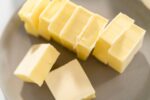
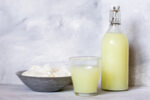
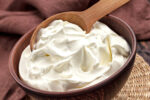
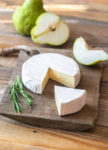
4 thoughts on “Making Homemade Cream Cheese”
This sounds fairly simple to do, but I think it might be hard to find Rennet here in the UK, unless I contacted a dairy farm.
It would be fun to make our own cream cheese, I wonder how it would taste compared to store bought. Hopefully better.
Do you have Junket brand products in your stores? They sell rennet plus an ice cream mix and a Danish dessert mix. You might try looking where you can buy pudding mixes. Or perhaps look online. I have a friend who has made her own cream cheese and she loves it. She lives in the U.S., though.
I’ve made cream cheese before but not buttermilk cream cheese or all the cool variations listed here. I’m looking forward to trying some of them.
I hope they turn out well. It’s fun to experiment.